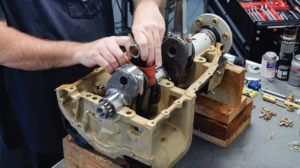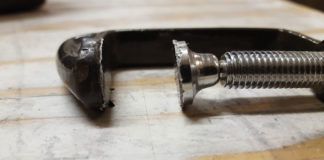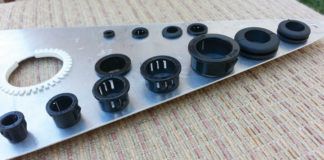It never fails to amaze me, this choice in powerplants for our Experimental aircraft. Here, you’ll find everything from standard “conventional” engines to radical new designs, as well as well-known alternative engines. If you were starting to think the entire world is made up of four-cylinder, Lycoming-like engines, you should just turn the page to Tom Wilson’s 2021 Engine Buyer’s Guide. Tom spent more hours researching designs and talking on the phone with vendors and engineers to bring this 25-page guide to life than he probably wants to admit. (Don’t do the math on that paycheck, Tom!)

His research reveals an amazing variety of designs and, increasingly, suppliers willing to construct full firewall-forward packages for popular aircraft. That aspect has come a long way from the roots of Experimentals, where you were pretty much expected to be a good tube cutter and a passable welder; it wasn’t uncommon to adapt a homebuilt design to whichever engine seemed to be the best fit or the closest at hand. Many early builders were on their own to determine engine mounts, induction and exhaust systems, refine cooling systems and many other aspects of the build. It’s no wonder so many parts from certified aircraft were repurposed to our needs.
Alternative Realities
Especially among we Type A’s, it’s genuinely tempting to edge away from the ordinary engine choices. Whether it’s to benefit from newer technology or obtain what we feel is a better value proposition ahead of the firewall, or both, personal reasons drive our decisions to, literally, experiment with engines and firewall-forward packages. Whichever way you choose to go, it’s best to traipse in during daylight hours, eyes wide open.
With that in mind, there are a few things to consider. First is that numbers are your friend—the more people who have done what you’re considering, with the engine you want and on exactly the airframe you’re building, the easier the process will be. There’s an exponential relationship between overall effort (time and money) and being the first to do something. Just like hiking: The guy cutting the trail is more likely to step on a snake than those following just behind. That’s a way of saying that you probably don’t want to be Customer #1 for any given project. Unless there’s a strong financial incentive to do so or, well, you just like that kind of thing. It’s true many pure experimenters revel in the R&D process, even when they’re not literally getting paid for it. It’s also true that most civilian homebuilders begin with the primary intention of finishing the airplane. Which are you?
Getting back to numbers: The more builders there are who have done what you’re considering, the better the chances they’ll have developed the kind of fleet experience that ferrets out both the big and small problems. These can range from cooling and fuel delivery issues to much larger “structural” problems—though it’s generally the case that the devil is in the details. Point being: Ten flying installations with 25 hours each isn’t much of a data set. What’s more, just because Engine X has tens of millions of hours or miles in other kinds of vehicles doesn’t guarantee anything on the front (or back) of an airplane.
Don’t minimize what seem like small differences. Remember the company that built your kit or penned the plans probably designed for a small range of engine/propeller combinations. In part this is due to limited resources. And while, in the world of conventional engines, many different types will fit onto a dynafocal mount, that doesn’t mean the rest of the airplane is happy. If you’re upping power, are you prepared to “reengineer” for additional heat rejection, a different exhaust system, altered intake tracts and fuel-system changes? If the engine is a different weight, how will the installed mass affect overall balance? How much off-the-shelf equipment can you retain, or will you need a custom prop hub, one-off exhaust system, special oil cooler or radiator or a hand-built airbox? Every step away from the tried-and-true adds time, cost and potential trouble areas. Every one.
Don’t misunderstand. This commentary is not intended to dissuade anyone from following their dreams. But I think it’s important to appreciate the full implications of veering away from designs built and tested by your kit maker or airframe designer. By choosing the path less traveled, you’re restarting the clock on development, potentially venturing into terra incognita and, very likely, working with a whole new set of moving targets. The phrase, “You don’t know what you don’t know,” absolutely applies here. None of this is inherently bad if that’s what you’re expecting.
Three for the Show
Every year for our annual kit- and plansbuilt directory issue, companies that do not respond are considered to be non-viable and are moved from “active” to “inactive” in our database. And every year we get a few who pipe up after the fact. “Hey, we’re still around, what’s up with you guys?”
This year (so far), we have Stewart Aircraft, whose FooFighter and Headwind B designs are still available. During the research phase, we attempted to reach Stewart several times but, as it turns out, the company’s website was not functional nor was its email address. Undaunted, Don Stewart reached us via email with the latest information. Should you be interested in FooFighter or Headwind B plans, you can find the updated info on our online guide. (You can also call him at 906-282-3045.)
Thunderbird Aviation says they’re alive and well, too, offering three kits—the SNS-7 Hiperbipe, the SNS-8 Hiperlight and the SNS-10 Hiperlight, though the SNS-10 is still said to be in development. Plans for the SNS-9 Hiperlight are also available. Thunderbird has updated its website—and we have updated ours—but you can call 586-262-2598.
Finally, a new company building a Part 103 ultralight chimed in. Badland Aircraft owner Chris Deuel wrote to say, “We’ve been in business for three years building Part 103-compliant ultralights and I feel like we’re smashing the competition…well I felt like it, anyways. If I were actually ‘killing it’ like I thought, I would’ve been in the 2021 homebuilt line-up.” Truth is, we didn’t have Badland on our radar—for that we can, partially, blame the COVID-related lack of airshows—but we’ve offered Chris an opportunity to submit the details and we’ll put them on our site, and in the next buyer’s guide.
Any others we’ve missed? Send us a note at [email protected].














I am very much a firm supporter of technology and new engine designs .
So by utilising short stroke large bore principles , 4 valve cylinder heads , overhead camshafts , modern flat combustion chambers , electronic engine management , it is possible to have smoother running engines that are lighter and more fuel efficient . That can lead to smaller , lighter engine mounts , improved fuel efficiency can allow a greater range on the same fuel load .
And you would still have the reliability of the older designs , all in all a win win situation .
I totally agree. I am replacing my Seized up Rotax 582 94 ttsn with a Suzuki G10 AT Turbo in a Bushbaby similar to Kitfox. The same engine what the AM 10 is based on. It is a lot of work and money initially but on the long run the cost savings will be worth it and yes I like to be different and prove the stereo types wrong🛩🛩🛩
As far as a dream engine, , I would like to see a flat opposed 4 cylinder , air-cooled Flathead. Bendix carb with a accelerator pump. Would be the simplest 4 stroke engine ever made. D-motor has proven the torque that a flat head has. Excellent idea with the Pegasus,, I feel that would match up good with a Stewart headwind.